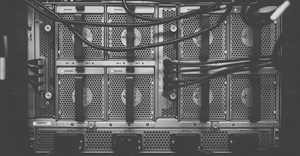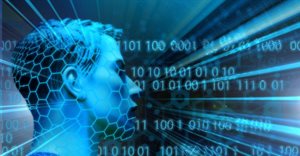Trending
5 Advantages of edge computing in the healthcare sector

When you think of expanding your business and also try to improve your performance through IoT, you need to think of edge computing. There are many benefits to mobile edge computing, with one of the best ways, is being able to manage your data.
What is edge computing?
In brief, edge computing means the activity that uses computers to manage, process, and communicate information for various purposes in a decentralised way. With edge computing, you bring down the number of running processes from the cloud, and you store the data on a local source, such as an IoT device, an edge server or the nearest node or PC.
Edge computing is highly beneficial in many sectors, such as medicine. Edge computing in the medical industry is the most sought after - making its mark in the health sector.
Here are five advantages of edge computing in the health sector:
- Security
Often times, when there is a vulnerability of data, physically or virtually, you can be assured of data protection by using edge computing. There is a lot of compliance requirements such as HITEC, ISO 27001, which makes it compulsory to adopt secure technology in the sector.
Healthcare organisations can, therefore, be relieved of all the complicated security policies and issues. In addition to this, with edge computing security you can secure the network and ensure data privacy. Other than this, with data being decentralised, it is not easy to take down the systems. The health sector can, therefore, benefit a lot from this approach.
- An improved patient experience
With the multi-access edge computing architecture working effectively, this framework can improve and better the patient experience. IoT smart apps can be developed where patients can check their appointments and also the schedule of the doctors. These devices can be utilised when lost in the hospital and act as a guide through the different departments.
Though edge computing limitations are present, this framework has the potential to renew the whole customer experience in the health sector. There are a lot of IoT devices and apps that provide tons of help to people and making the correct use of edge computing can be very accommodating. With almost no latency, edge computing can aid in decentralising the data that is provided to the patients.
- Mobility
Having mobile data centres can be the best because the cloud can be the only source from where the personnel are going to access sensitive information from anywhere in the world with any device. While we can debate the pros and cons of edge computing, one of the main reason to incorporate it in the healthcare industry is because of its easy scalability and mobility.
We all know how tough it is to build an excellent data centre. With the expenses incurred, it might prove to be a costly affair. Thus, when you choose edge computing, it is much more mobile and scalable. You can decentralise the data or expand the computing capacity of the data through IoT devices. This is one of the benefits of multi-access edge computing where there is not a specific bandwidth of data computing.
- Cost Cutting
Due to the speed of edge computing, you can save up to 25% of the total capital costs. Since there is already a lot of investment in the health infrastructure, IoT medical devices powered with edge computing can help in numerous ways.
For instance, you can use them for monitoring of senior patients and engagement. Other devices like implanted sensors and IoT-based health care services can be used to reduce the overall cost incurred on the patient. Other than this, when you maintain some of the records continuously for years, there is a lot of data that needs to be stored in the cloud.
Thus, the tiring and gruesome record-keeping of the IoT devices can be problematic. If multi-access edge computing is used, there can be quicker communications and better access to services. Edge computing encourages innovations that are cost-effective and can be embraced with minimal costs.
- Getting medication to rural areas
While governments try to provide necessary healthcare facilities to rural places, it is often a difficult feat to deliver quality healthcare to isolated rural areas. Thus, in situations like this, the mobile edge computing market can be spread.
Medical providers are struggling to deliver proper healthcare to rural people fast, but with the edge computing speed, hospitals can provide quality healthcare to those people who have minimal or no internet access at all. Using a combination of multi-access edge computing, mobile edge computing and IoT, a few applications can be brought into the picture to battle the connectivity issues.
Bringing portable medical devices that are developed by edge computing can gather, generate and analyses the patient data. All this can be done with almost no network access. And the patients who wear these IoT devices can be cured effectively right on the spot.
Whatever information is gathered, it can be sent to central servers, and the connections can be established. By interfacing all the information with an edge computing data centre, health services can be extended to the rural people.
The utilisation of IoT devices is already turning commonplace. But with the increase of smart devices, they are bound to store vast amounts of data. The healthcare industry needs mobile edge computing for effectively reaching the goal of providing primary healthcare to everyone. With a few advanced developments, it is better to count on mobile edge computing as it has some key advantages.
However, when you are about to venture into his field, it is better to weigh the pros and cons of mobile edge computing.

















